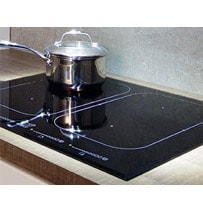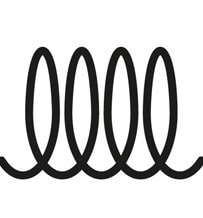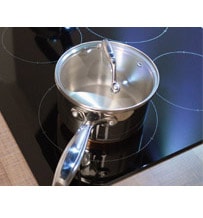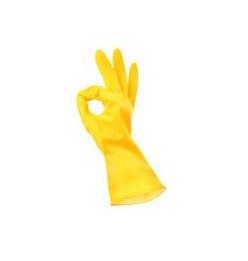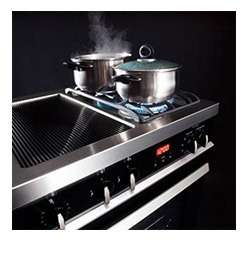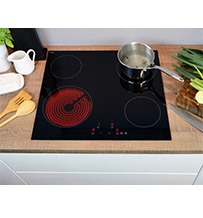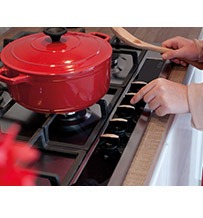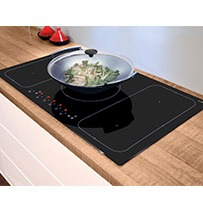CDA Buying Advice – Induction Hobs
Induction hobs offer the speed of gas with the practical safety of ceramic. Super-fast, easy to clean and energy efficient, they offer the best of both worlds.
Are induction hobs really that fast?
If you are looking to have electricity as your energy supply for hob cooking, induction is certainly the fastest option available. Because the energy is transferred directly to the pan metal, and the contents of the pan, it can boil water even faster than a gas hob. We’ve even added an additional boost function to cut down your waiting time even further. Take a look at our video where we put the induction hob to the test and boil water, head to head with a gas hob in order to find out which is faster in a real life challenge.
Not only will an induction hob bring water to boil and pans to a searing temperature very quickly, it will also drop the temperature rapidly too when you adjust the power settings down. This is handy if you want to quickly reduce the heat to prevent pans from boiling over.
Is an induction hob easy to clean?
The smooth glass surface and seamless touch controls on our induction hob collection make them extremely easy to keep clean. A simple wipe over will remove most dirt from the surface of the hob without the need to remove and replace pan supports or clean around control knobs. There is also a lack of residual heat in the cooking zones so they take much less time to cool down after you have finished using them. This means you can wipe down your kitchen almost straight after you have finished cooking.
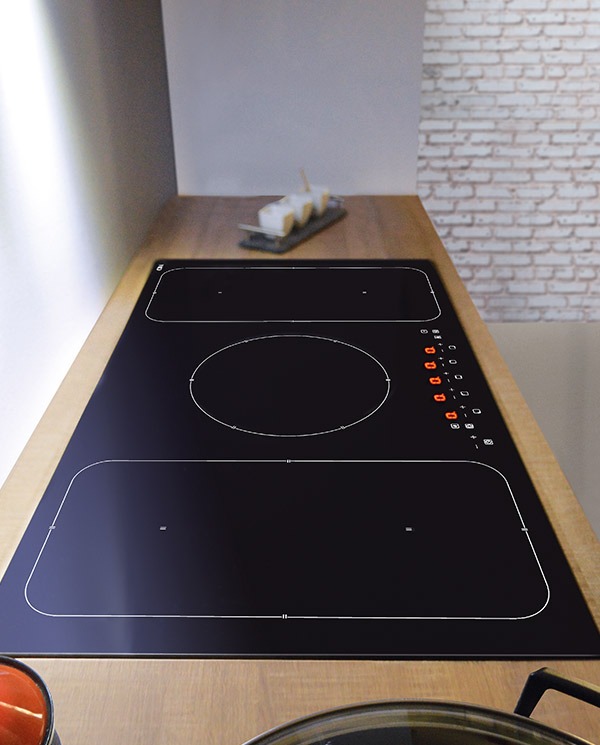
What sizes is induction available in?
Whether you are looking for a compact two zone cooking solution or a fully sized six zone cooking surface, we have created a complete range of induction hob models that offer various sizes, widths and layouts to suit the way that you cook. Choose from a simple four zone layout or spread out with our linear model with the zones sitting side by side to offer maximum elbow room when cooking.
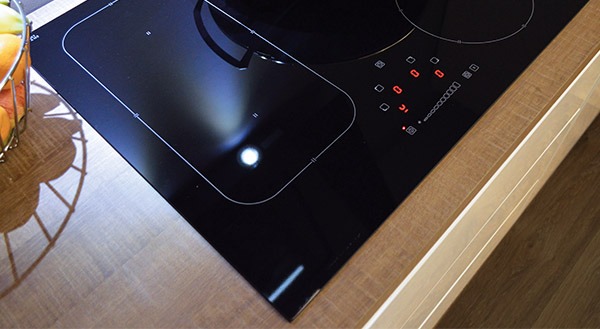
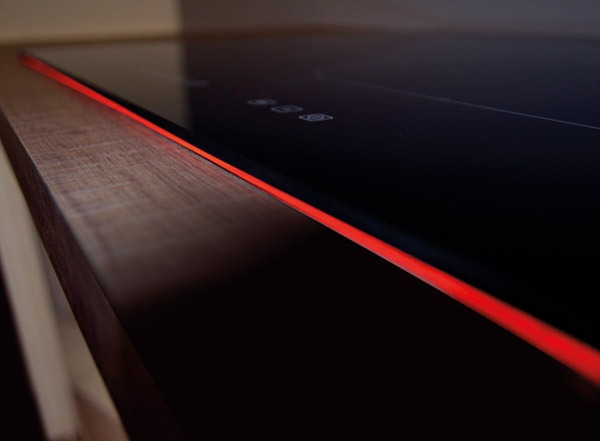
Bridging technology
There are even bridged models that feature large cooking areas that can be used as traditionally sized zones or ‘bridged’ together to form elongated rectangles that will accommodate induction-compatible baking trays for gravy making and large casseroles or fish kettles. If you are wondering how the bridging technology works, we have prepared a guide for you that talks through the science behind it and the benefits of including these flexible zones in our induction hob range.
What other features does induction have?
Aside from the speedy benefits of cooking with induction, there are many additional safety features included in the range to make cooking a safer activity in the home. We have included residual heat indicators, safety key locks to prevent accidental changes to your settings and timers to help you plan and cook meals in a busy kitchen. There is also anti-overheat and overflow protection built in to the hob that will detect when a pan is going to boil over or if the hob is overheating and adjust the settings accordingly. Your induction hob won’t even work if you accidentally place something small, like a spoon, on the surface of the hob as it has an intelligent small object detector to determine if there is a pan in place to start cooking.
Energy efficiency
If the performance of induction has not yet convinced you, the benefits of even more energy efficient cooking might. An induction hob is much cheaper to run than a traditional solid plate electric or even a ceramic hob. The induction hob transfers energy directly to the surface of the pan in contact with it, without additionally heating up the remaining part of the zone. This saves a lot of energy as heat is not being wasted and is only being concentrated exactly where it needs it. Radiant heat, like that on a ceramic hob, has to first heat up the glass which then conducts to the pan and lastly the food or liquid inside whereas the magnetic aggravation of molecules in induction technology generates heat directly inside the pan.
For our full guide on the technology behind induction cooking, click here.
Which pans should I use?
The main consideration when purchasing an induction hob is the pans that you use. You have to ensure that they are magnetic (test the bases with a fridge magnet) in order for the technology to work. Read our full guide on induction compatible pans here. On the plus side, most modern pan sets are compatible with induction and the cost saving on energy over just a year will more than compensate for the price of a new pan set if you do need to invest and replace them.
Health and safety: Pacemakers
Due to the electromagnetic field created by an induction hob, pacemaker wearers should keep a distance of at least 60cm or 2ft from the appliance as it may interfere with your settings.
To install an electric hob, please always use a qualified electrician to ensure that it connected up properly and is completely safe to use.


